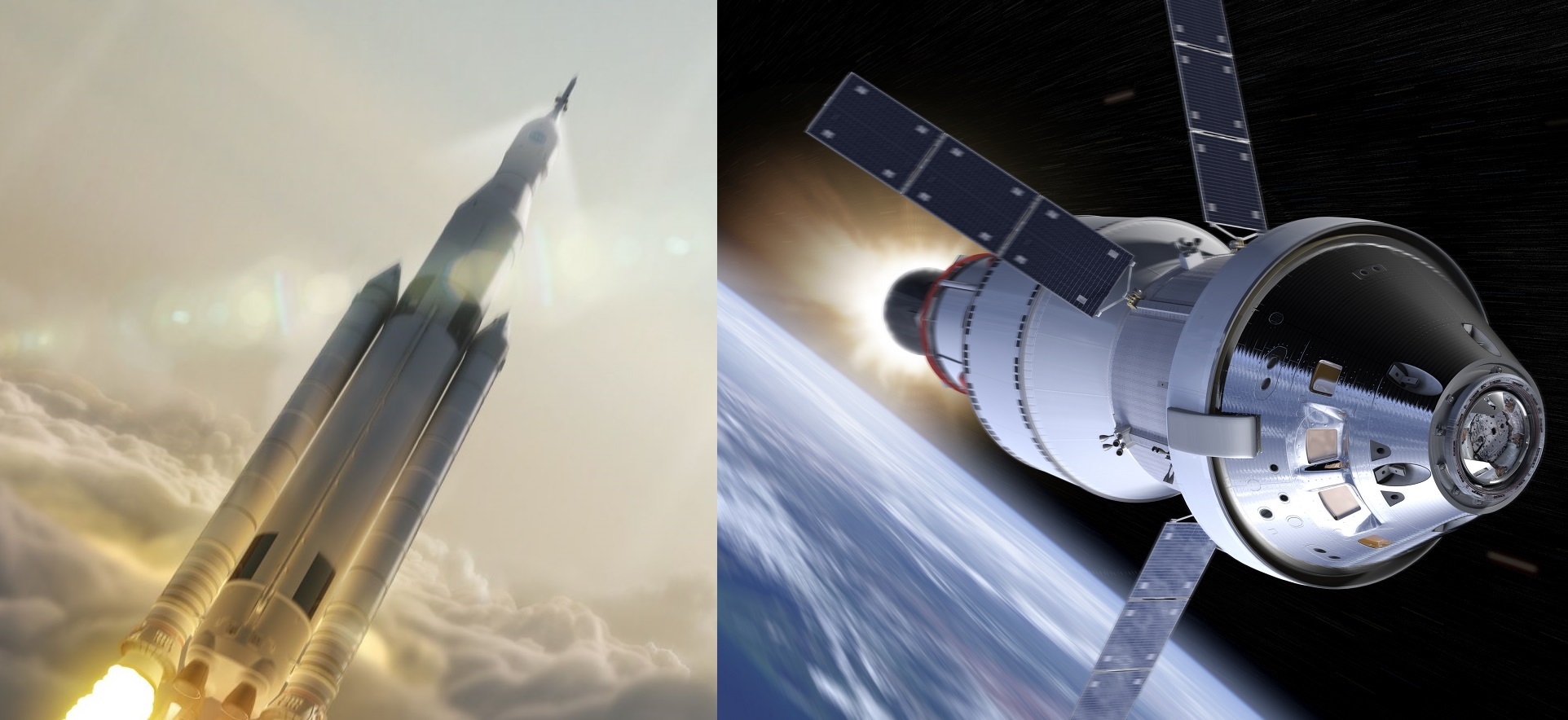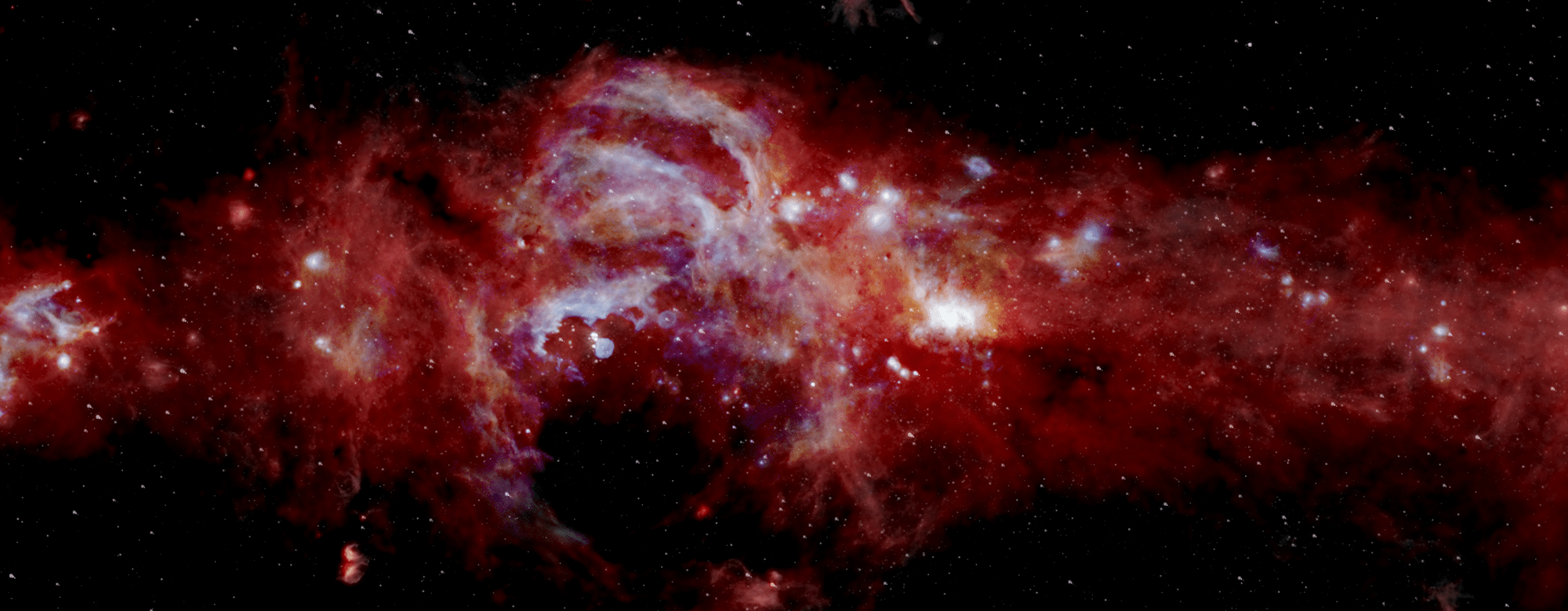The world’s largest airborne telescope, SOFIA, has peered into the core of the Milky Way and captured a crisp image of the region. With its ability to see in the infrared, SOFIA (Stratospheric Observatory For Infrared Astronomy) is able to observe the center of the Milky Way, a region dominated by dense clouds of gas and dust that block visible light. Those dense clouds are the stuff that stars are born from, and this latest image is part of the effort to understand how massive stars form.
Continue reading “This is the Core of the Milky Way, Seen in Infrared, Revealing Features Normally Hidden by Gas and Dust”The Moon’s Magnetosphere Used to be Twice as Strong as the Earth’s
For decades, scientists have held that the Earth-Moon system formed as a result of a collision between Earth and a Mars-sized object roughly 4.5 billion years ago. Known as the Giant Impact Hypothesis, this theory explains why Earth and the Moon are similar in structure and composition. Interestingly enough, scientists have also determined that during its early history, the Moon had a magnetosphere – much like Earth does today.
However, a new study led by researchers at MIT (with support provided by NASA) indicates that at one time, the Moon’s magnetic field may have actually been stronger than Earth’s. They were also able to place tighter constraints on when this field petered out, claiming it would have happened about 1 billion years ago. These findings have helped resolve the mystery of what mechanism powered the Moon’s magnetic field over time.
Continue reading “The Moon’s Magnetosphere Used to be Twice as Strong as the Earth’s”The Surprising Possibility That There are Still Active Volcanoes on Venus

Despite the similarities our world has with Venus, there is still much don’t know about Earth’s “Sister planet” and how it came to be. Thanks to its super-dense and hazy atmosphere, there are still unresolved questions about the planet’s geological history. For example, despite the fact that Venus’ surface is dominated by volcanic features, scientists have remained uncertain whether or not the planet is still volcanically active today.
While the planet is known to have been volcanically active as recent as 2.5 million years ago, no concrete evidence has been found that there are still volcanic eruptions on Venus’ surface. However, new research led by the USRA’s Lunar and Planetary Institute (LPI) has shown that Venus may still have active volcanoes, making it the only other planet in the Solar System (other than Earth) that is still volcanically active today.
Continue reading “The Surprising Possibility That There are Still Active Volcanoes on Venus”It’s Snowing Iron Near the Earth’s Core

Scientists theorize that within Earth’s interior, conditions are extremely hot and extremely pressurized. This is what allows for the primarily iron and nickel core to be divided between a solid inner region and liquid outer region. The dynamics of this core are believed to be responsible for driving our planet’s protective magnetosphere, which is why scientists are determined to improve their understanding of it.
Thanks to new research conducted by an international team of scientists, it appears that the core region also gets its fair share of “snow”! To put it another way, their research showed that within the outer core, tiny particles of iron solidify and fall to form piles up to 320 km (200 mi) thick on top of the outer core. These findings could vastly improve our understanding of the forces that affect the entire planet.
Continue reading “It’s Snowing Iron Near the Earth’s Core”“Super-Puff” Exoplanets Aren’t Like Anything We’ve Got in the Solar System

The study of extrasolar planets has really exploded in recent years. Currently, astronomers have been able to confirm the existence of 4,104 planets beyond our Solar System, with another 4900 awaiting confirmation. The study of these many planets has revealed things about the range of possible planets in our Universe and taught us that there are many for which there are no analogs in our Solar System.
For example, thanks to new data obtained by the Hubble Space Telescope, astronomers have learned more about a new class of exoplanet known as “super-puff” planets. Planets in this class are essentially young gas giants that are comparable in size to Jupiter but have masses that are just a few times greater than that of Earth. This results in their atmospheres having the density of cotton candy, hence the delightful nickname!
Continue reading ““Super-Puff” Exoplanets Aren’t Like Anything We’ve Got in the Solar System”Spaceflight Stories Expected for 2020

The year two thousand and twenty is almost upon us. And as always, space agencies and aerospace companies all around the world are preparing to spend the coming year accomplishing a long list of missions and developments. Between NASA, the ESA, China, SpaceX, and others, there are enough plans to impress even the most curmudgeonly of space enthusiasts.
Continue reading “Spaceflight Stories Expected for 2020”Carnival of Space #644
This week’s Carnival of Space is hosted by Zain Husain at the Brownspaceman.com blog.
Click here to read Carnival of Space #644.
And if you’re interested in looking back, here’s an archive to all the past Carnivals of Space. If you’ve got a space-related blog, you should really join the carnival. Just email an entry to [email protected], and the next host will link to it. It will help get awareness out there about your writing, help you meet others in the space community – and community is what blogging is all about. And if you really want to help out, sign up to be a host. Send an email to the above address.
Top Astronomical Events for 2020

Ready for another amazing year of sky watching and astronomy in 2020? Hard to believe, were already a fifth of the way into the 21st century. 2020 rounds out the final year of the second decade, promising an amazing year of skywatching to come.
Continue reading “Top Astronomical Events for 2020”Waiting for Betelgeuse: What’s Up with the Tempestuous Star?

Have you noticed that Orion the Hunter—one of the most iconic and familiar of the wintertime constellations—is looking a little… different as of late? The culprit is its upper shoulder star Alpha Orionis, aka Betelgeuse, which is looking markedly faint, the faintest it has been for the 21st century.
Continue reading “Waiting for Betelgeuse: What’s Up with the Tempestuous Star?”Halo Around a Pulsar could Explain Why We See Antimatter Coming from Space
Astronomers have been watching a nearby pulsar with a strange halo around it. That pulsar might answer a question that’s puzzled astronomers for some time. The pulsar is named Geminga, and it’s one of the nearest pulsars to Earth, about 800 light years away in the constellation Gemini. Not only is it close to Earth, but Geminga is also very bright in gamma rays.
Continue reading “Halo Around a Pulsar could Explain Why We See Antimatter Coming from Space”


